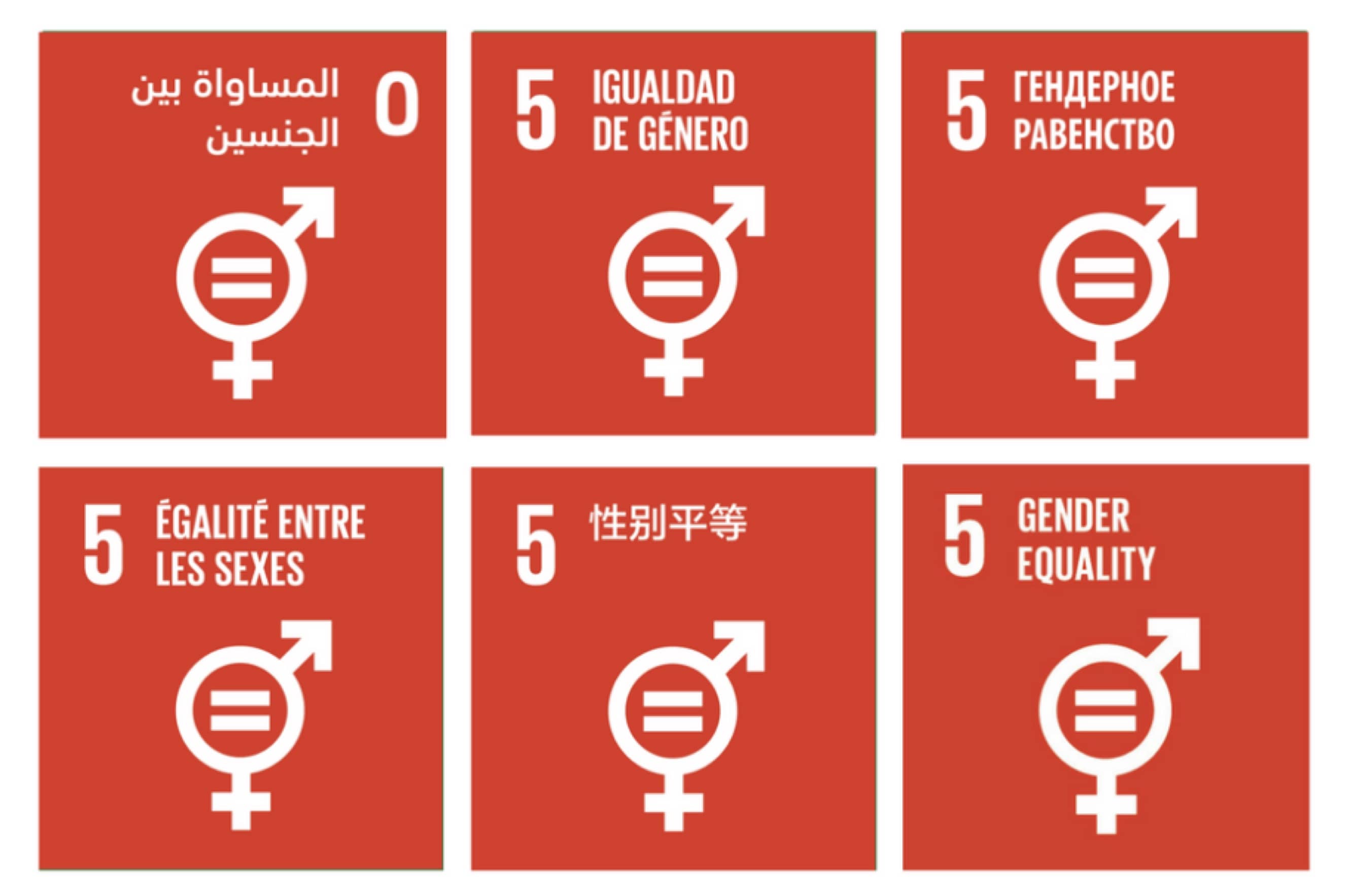
www.buildingsandcities.org/insights/commentaries/gender-inclusive-urban.html
Towards a Gender-Inclusive Urban Future

Cities are beginning to address gender inequality and successful examples show what can be achieved
Jua Cilliers (University of Technology Sydney & the Commonwealth Association of Planners) explores how addressing gender disparities can create cities that are inclusive, safe and functional for all their inhabitants. Gender inequity intersects with access, mobility, safety, health, climate resilience and security of tenure. Women and other marginalized gender groups face barriers in accessing public services, navigating through cities and staying safe.
Urban planning is a nuanced process. At its essence, it's about creating spaces that resonate with the lived experiences, aspirations and challenges of every individual. Urban spaces have been predominantly designed from a male-centric perspective, overlooking the unique requirements of women (Cilliers & Agnello 2023, p. 22). Research into gender disparities highlights this issue of 'gender-blindness' in urban planning which can be observed in from bustling avenues of New York to the expansive slums of Mumbai.
Impacts of gender inequality
The current situation facing women in urban areas in South Africa was well described by Meyer (2020). Employing a mix of quantitative and qualitative research methods, the study painted a vivid picture of the urban challenges women face daily. A significant number of women reported inadequate public infrastructure, pointing to a lack of seating areas and restroom facilities in their daily environments. The deteriorating condition of roads and sidewalks was another major concern, especially for those commuting with children or infants, that highlighted the daily logistical and physical challenges women face. But perhaps the most alarming revelation was the pervasive feeling of insecurity, due to a lack of safe spaces and transport options, which inhibit these women to fully engage in urban activities and apprehension about venturing out after dark.
Previous research indicates that the lack of access to safe environments and safe transport modes in developing countries, resulted in a 16% reduction of the probability of women participating in the labour force (UN Habitat 2012). This also limits women's access to economic opportunities and essential services, which has health implications. A World Health Organisation report (2021) found that 32% of adult women are insufficiently physically active (in comparison to 23% of men). The study's implications thus go beyond mere infrastructure. It underscores the deeper societal issue to redress historical gender imbalances. This is a crucial and timely issue when considering that nearly 40% of the world's economies still have at least one legal constraint on women's rights to property (World Bank 2019).
The 2023 Global Gender Gap Index benchmarked gender across 146 countries. A score of 100% would be awarded where there was no gender gap in a country, on average globally a score of 68.4% shows that the gender gap remains significant worldwide.
Addressing gender inequality
Tackling gender disparities in urban planning requires a comprehensive approach. It goes beyond merely constructing inclusive physical spaces; it's about cultivating cities that embody social and economic justice. Gender-based planning isn't solely about meeting women's needs; it's about designing spaces that are welcoming and functional for everyone, regardless of gender. The principles of 'inclusivity', 'vulnerability' and 'equality' are foundational to gender-based planning.
The concept of gender-based planning is gaining traction worldwide. Cities like Vienna have pioneered gender-sensitive urban planning. Several initiatives were implemented. Street lighting was improved in specific areas; traffic lights were altered to prioritise pedestrians; and seating was installed more broadly. More than a kilometre of pavement was widened, and five areas were made entirely barrier-free in order to accommodate prams amongst others. Their revamped parks guidelines to include recreation facilities suited for women and girls, such as volleyball and badminton courts, alongside more seating areas, extra footpaths, benches, trees, and shade to improve mobility and access. The renaming of streets to feature female names were also part of the cultural awareness piece to support gender-balanced cities. Through a systematic approach to addressing gender gaps in design and planning, the City of Vienna has notably elevated its quality of life, standing out as a global exemplar of successful gender inclusion in urban development. Although there is still more to do, the city is notable for its integrated community and vibrant public spaces, which underscores the significance of gender mainstreaming to create a better space for all (Hunt 2019).
In Kerala, the local government formulated a Gender Action Plan within the framework of a Sustainable Urban Development Project to amplify women's involvement in planning. The plan included skill development training, establishing marketing centres for women and linking with academic institutions for microenterprise development (Asian Development Bank 2015). This created a more equitable built environment and cultivated leadership skills, enhanced participation and decision making by women (Asian Development Bank 2015). Karela's people-centric and gender-sensitive public action has improved the effectiveness of its broader policy making.
In Mexico City, practical, short-term transportation solutions were introduced to address gender issues related to harassment and sense of safety. The 'Pink Transportation' programme was introduced where specific metro cars and bus lines were designated for women only. These visually pink modes of transport later expanded to include a women-exclusive pink taxi service featuring female drivers and serving female passengers only. Gender-segregated transportation has sparked controversial debates among feminists and transit advocates. Research by Dunckel-Graglia (2013) suggests gender is strongly correlated with opinion about women-only transportation and found that 50% of women always take women-only transit. The most often-cited reasons to not use women-only transport are that it does not serve commuting routes or is not conveniently situated for women. Although women-only transportation options provide pragmatic solutions to the immediate problem of violence against women in public tranport, it fails to address the underlying structural issues causing it. Nonetheless, an example of gender-based options in the urban environment.
Future action needed
The Commonwealth Association of Planners advocates that the future of urban planning must be gender responsive. Their 'Women in planning manifesto' (Commonwealth Association of Planners 2018a) calls for a holistic approach to city planning that addresses the unique needs of all its inhabitants. It recognises that urban challenges in the sprawling African and Asian metropolises are universal, although context-based, and in most cases, lack a gendered perspective.
The manifesto highlights the augmented burdens women face. These include extended treks to source water, the heightened vulnerability of women in public areas, the restricted physical and social mobility for women, the discriminatory social norms and policies such as limited rights to land title and use, reduced housing security and access to affordable housing, inconsistent access to public amenities (e.g. transportation, parks, roads and sanitation services).
There is an increasing global recognition of the need for gender-specific data along with comprehensive toolkits as a roadmap to more inclusive urban futures. The World Bank's Handbook for Gender-inclusive Urban Planning and Design (World Bank 2020) elaborates on the importance of gender-disaggregated statistical indicators, data, standards, codes, and best practices. This will enable a better understanding and evaluation the impact of planning on women and girls globally. Such gender-specific data would also inform appropriate methods and good practices for incorporating and elevating the voices of women in planning and design processes. This would help cities to understand and cater to the distinct needs of their female inhabitants.
Imagine cities with public amenities and transportation networks designed with the safety and convenience of women in mind. Such a vision isn't only about gender equality; it's about building resilient, thriving communities for everyone. This is now embodied as a requirement in global initiatives e.g., the Sustainable Development Goals, the New Urban Agenda (Habitat III), and the International Guidelines for Urban and Territorial Planning of UN-Habitat.
Women are under-represented in the built environment professions. An increased level of women's participation can ensure urban strategies are comprehensive, inclusive, and enduring. Their insights, experiences, and expertise will be pivotal in crafting urban landscapes that are not only architecturally impressive but also functional, safe, and inclusive for all.
Although there are encouraging indicators in policy and planning advancements, the journey ahead demands concerted efforts. To achieve the required changes requires governments, urban planners, civil society and communities to advocate for gender-sensitive planning. This will help to ensure that cities are not only thriving, but also vibrant and inclusive for all.
References
Asian Development Bank. (2015). Gender mainstreaming case study-India: Kerala sustainable urban development. www.adb.org/sites/default/files/publication/160695/gender-mainstreaming-ind-kerala-urban.pdf
Cilliers, J. & Agnello, K. (2023). Gender and sustainable urbanisation-the work of the CAP Women in Planning Network. In C. Hague, C. Harridge, B. Julyan, R Nik & I. Tant (editors) Planning, Sustainable Urbanisation and the Commonwealth: The Commonwealth Association of Planners, Past, Present and Future. New. York and Abingdon: Routledge.
Commonwealth Association of Planners. (2018a). Commonwealth Women in Planning Network Manifesto. https://www.commonwealth-planners.org/cwip-network
Commonwealth Association of Planners. (2018b). Planning for Rapid Urbanisation - Survey of the Planning Profession in the Commonwealth. https://www.commonwealth-planners.org/planning-for-rapid-urbanisation
Dunckel-Graglia, A. (2013). Women-only transportation: How "pink" public transportation changes public perception of women's mobility. Journal of Public Transportation, 16(2), pp.85-105.
Hunt, E. (2019, May 14). City with a female face: how modern Vienna was shaped by women. The Guardian. https://www.theguardian.com/cities/2019/may/14/city-with-a-female-face-how-modern-vienna-was-shaped-by-women
Meyer, M. (2020). Gender-inclusive cities: Reflections from South African women. [Research project at the North-West University, ZA submitted for partial completion of the degree Bachelors of Science in Urban and Regional Planning]
UN-Habitat. (2012). Gender Issue Guide: Urban Planning and Design. https://unhabitat.org/wp-content/uploads/2014/07/Gender-Responsive-Urban-Planning-and-Design.pdf p. 16.
World Bank. (2020). Handbook for gender-inclusive urban planning and design. Washington: World Bank Publications. https://openknowledge.worldbank.org/bitstream/10986/33197/6/145305.pdf
World Economic Forum. (2023). Global gender gap report 2023. https://www.weforum.org/publications/global-gender-gap-report-2023/
World Health Organization. (2021). Fair play: building a strong physical activity system for more active people. (reference number: WHO/HEP/HPR/RUN/2021.1). World Health Organization. https://www.who.int/publications/i/item/WHO-HEP-HPR-RUN-2021.1
Latest Peer-Reviewed Journal Content
Youth engagement in urban living labs: tools, methods and pedagogies
N Charalambous, C Panayi, C Mady, T Augustinčić & D Berc
Co-creating urban transformation: a stakeholder analysis for Germany’s heat transition
P Heger, C Bieber, M Hendawy & A Shooshtari
Placemaking living lab: creating resilient social and spatial infrastructures
M Dodd, N Madabhushi & R Lees
Church pipe organs: historical tuning records as indoor environmental evidence
B Bingley, A Knight & Y Xing
A framework for 1.5°C-aligned GHG budgets in architecture
G Betti, I Spaar, D Bachmann, A Jerosch-Herold, E Kühner, R Yang, K Avhad & S Sinning
Net zero retrofit of the building stock [editorial]
D Godoy-Shimizu & P Steadman
Co-learning in living labs: nurturing civic agency and resilience
A Belfield
The importance of multi-roles and code-switching in living labs
H Noller & A Tarik
Researchers’ shifting roles in living labs for knowledge co-production
C-C Dobre & G Faldi
Increasing civic resilience in urban living labs: city authorities’ roles
E Alatalo, M Laine & M Kyrönviita
Co-curation as civic practice in community engagement
Z Li, M Sunikka-Blank, R Purohit & F Samuel
Preserving buildings: emission reductions from circular economy strategies in Austria
N Alaux, V Kulmer, J Vogel & A Passer
Urban living labs: relationality between institutions and local circularity
P Palo, M Adelfio, J Lundin & E Brandão
Living labs: epistemic modelling, temporariness and land value
J Clossick, T Khonsari & U Steven
Co-creating interventions to prevent mosquito-borne disease transmission in hospitals
O Sloan Wood, E Lupenza, D M Agnello, J B Knudsen, M Msellem, K L Schiøler & F Saleh
Circularity at the neighbourhood scale: co-creative living lab lessons
J Honsa, A Versele, T Van de Kerckhove & C Piccardo
Positive energy districts and energy communities: how living labs create value
E Malakhatka, O Shafqat, A Sandoff & L Thuvander
Built environment governance and professionalism: the end of laissez-faire (again)
S Foxell
Co-creating justice in housing energy transitions through energy living labs
D Ricci, C Leiwakabessy, S van Wieringen, P de Koning & T Konstantinou
HVAC characterisation of existing Canadian buildings for decarbonisation retrofit identification
J Adebisi & J J McArthur
Simulation and the building performance gap [editorial]
M Donn
Developing criteria for effective building-sector commitments in nationally determined contributions
P Graham, K McFarlane & M Taheri
Join Our Community

The most important part of any journal is our people – readers, authors, reviewers, editorial board members and editors. You are cordially invited to join our community by joining our mailing list. We send out occasional emails about the journal – calls for papers, special issues, events and more.
We will not share your email with third parties. Read more



Latest Commentaries
COP30 Report
Matti Kuittinen (Aalto University) reflects on his experience of attending the 2025 UN Conference of the Parties in Belém, Brazil. The roadmaps and commitments failed to deliver the objectives of the 2025 Paris Agreement. However, 2 countries - Japan and Senegal - announced they are creating roadmaps to decarbonise their buildings. An international group of government ministers put housing on the agenda - specifying the need for reduced carbon and energy use along with affordability, quality and climate resilience.
Building-Related Research: New Context, New Challenges
Raymond J. Cole (University of British Columbia) reflects on the key challenges raised in the 34 commissioned essays for Buildings & Cities 5th anniversary. Not only are key research issues identified, but the consequences of changing contexts for conducting research and tailoring its influence on society are highlighted as key areas of action.